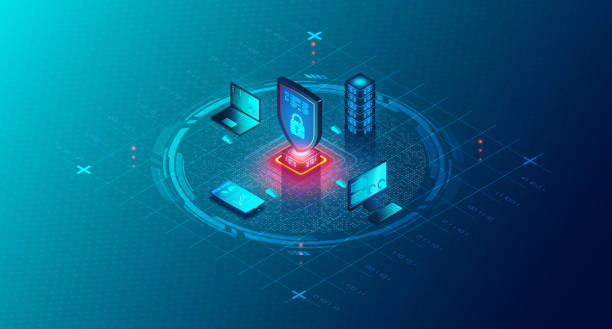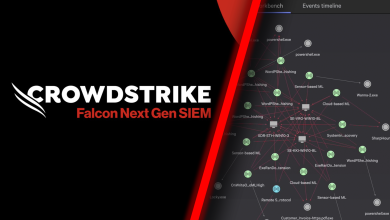Enhancing Endpoint Management with AI: Strategies for Operational Efficiency and Security
AI Is Supercharging Cybersecurity, But Is It Enough?

The cybersecurity landscape has never been more dynamic—or more challenging. The fusion of artificial intelligence (AI) with cybersecurity has sparked both opportunity and peril, creating what some might call an “AI arms race.” AI tools are making substantial inroads in streamlining IT operations, especially in endpoint management, where real-time data visibility has become indispensable.
With AI-powered automation, many mundane tasks—like patch management, application updates, and incident response—can now be handled seamlessly. By leveraging AI, “IT operational efficiency and resilience are not only achievable but have become essential to withstand the growing tide of cyber threats,” explains Nick Lim, Vice President, APAC, at Tanium. These advanced tools ensure organisations can anticipate issues before they escalate, moving from reactive defence to proactive fortification.
Yet as cybersecurity professionals rush to integrate AI, they’re also encountering the complex and often fragmented infrastructure of traditional endpoint management systems. To make matters worse, cybercriminals are harnessing AI to automate and intensify their attacks, making it harder for organisations to keep up. In this article, we asked Nick how today’s organisations can balance these challenges to maintain a strong security posture while unlocking the full potential of AI-driven endpoint management.
Why Endpoint Management Is the Heart of Cybersecurity
Nick believes that endpoint management is at the crux of effective cybersecurity. This is because each endpoint—whether it’s a device, application, or server—serves as a potential access point that attackers can exploit. As organisations expand their digital operations, managing and securing these endpoints becomes essential to protecting the entire network.
A modern organisation’s digital ecosystem is akin to a vast, intricate network of endpoints, all of which need constant oversight. Many are turning to AI to streamline this oversight, leveraging its ability to analyse large volumes of data and identify vulnerabilities as they arise. Nevertheless, Nick highlights the importance of having full visibility across these endpoints, noting that without it, “AI algorithms relying on stale data generate false positives and increase the burden on human operators.” Accurate, real-time data allows AI algorithms to deliver insights that are both timely and actionable, ensuring that blind spots in the network are eliminated and potential breaches are averted.
However, not all organisations have embraced the transformative power of AI in cybersecurity to this extent. Many are still bogged down by legacy tools that were designed in an era when cyber threats were simpler, more contained. These outdated systems, the Vice President for APAC at Tanium points out, “often lack the real-time data essential to pinpoint vulnerabilities as they emerge.” For organisations managing thousands—or even millions—of endpoints, outdated systems can be liabilities, not assets.
One of the major challenges organisations face in endpoint management stems from fragmented tools. Often, IT operations and security teams work in silos, using separate tools and datasets, resulting in disjointed responses to cyber threats. He describes this as an endemic issue in the industry, where “siloed data and delayed responses” compromise the agility and efficacy of cybersecurity teams.
By contrast, he mentioned Tanium’s Converged Endpoint Management (XEM) platform as an example of a solution that is designed to unify IT operations and security functions under one roof. With this approach, both functions utilise the same data, fostering seamless collaboration and bolstering an organisation’s defence capabilities. As Nick puts it, “a unified platform bridges gaps, provides real-time insights, and ensures scalability and adaptability for global operations.” The platform’s continuous monitoring, paired with automated remediation, fortifies security defences by quickly identifying and addressing issues—whether it’s a patch that needs updating or a potential breach that requires containment.
Success in Action: AstraZeneca’s Transformation

According to Nick, the transformative potential of unified endpoint management platforms is perhaps best illustrated by AstraZeneca’s experience. Operating across 100 countries with more than 125,000 endpoints, AstraZeneca struggled with limited visibility and sluggish patch management prior to its partnership with Tanium. Delays in detecting and addressing vulnerabilities left the company vulnerable, a precarious position for any organisation, let alone one with critical pharmaceutical and research operations.
After implementing Tanium’s XEM, AstraZeneca managed to reduce patching times from a week to an astonishing 10 minutes. The efficiency boost wasn’t just about speed; it allowed AstraZeneca to integrate seamlessly with solutions from ServiceNow and Microsoft, automating crucial processes and elevating its security posture. Nick explains, “Real-time visibility over every endpoint eradicated vulnerabilities almost instantaneously, and automated responses eliminated human delays.” For AstraZeneca, the partnership marked a turning point, safeguarding not only sensitive research data but also the stability of global operations.
The Evolution of Cyber Threats in the AI Era
AI’s capabilities in cybersecurity are undeniable, yet its widespread adoption has altered the threat landscape as well. Cybercriminals, well aware of the advancements in AI-driven defences, have adjusted their tactics accordingly. The irony, as Tanium’s Vice President of APAC highlights, is that “while AI enhances resilience, it also forces threat actors to become more sophisticated, pushing them to leverage AI to their advantage.”
This escalating arms race has further amplified the need for robust endpoint security. Traditional security measures that once provided a basic defence are now inadequate. Machine learning algorithms are not only analysing vast amounts of data at speeds beyond human capacity but are also learning from every data point, making each subsequent analysis more refined. Threat actors, for their part, are harnessing AI to develop malware that can adapt, evade detection, and exploit weak points more effectively than ever before.
Nick recognises that staying ahead requires a strategy of adaptability and integration. Tanium’s own solution is built on the foundation that visibility and real-time data are non-negotiable. He explains that the unified XEM platform, with its robust endpoint management, gives organisations the power to act on threats proactively. In an era where cyber threats evolve daily, such adaptability is invaluable.
Reflecting on the AI arms race, Nick stresses the importance of predictive analytics to counter AI-driven attacks. “Predictive analytics doesn’t just monitor,” he notes, “it anticipates vulnerabilities, pinpointing potential weaknesses before they can be exploited.” This proactive approach, enhanced by machine learning, allows cybersecurity systems to evolve in tandem with the threats they combat, keeping pace with the relentless ingenuity of adversaries.
Balancing Ethics and Automation in AI-Driven Cybersecurity
As the conversation went on, Nick delved into several key areas influenced by AI’s evolving role in cybersecurity. One of the first points he raised was that while AI is transforming security measures, it also brings complex ethical questions to the forefront.
AI-driven systems can make decisions without human intervention, but this autonomy must be balanced with ethical oversight. Autonomous systems that identify and neutralise threats without human input sound promising but introduce complex challenges around accountability. Nick notes that “while automation reduces response times, it also raises the question of who—or what—is making the critical decisions.”
For instance, if an AI system detects suspicious activity on a critical endpoint, should it automatically isolate that device, potentially impacting operations, or should a human verify the threat first? This ethical dilemma isn’t unique to Tanium but is a broader question within the cybersecurity industry. The key, the C-suite executive believes, is to strike a balance where “AI enables speed and accuracy without compromising the oversight necessary for ethical decision-making.”
Additionally, one of the most pressing challenges in the cybersecurity industry is the skills gap. With a shortage of qualified cybersecurity professionals, organisations are struggling to maintain adequate defences. AI and automation, he argues, offer a lifeline by reducing the reliance on human resources for routine tasks and empowering teams to focus on strategic, high-level threats.
“AI-driven automation can handle repetitive tasks like patch management, freeing skilled professionals to address complex challenges,” says Nick. This shift, enabled by technology, has the potential to alleviate the skills gap and improve job satisfaction for cybersecurity professionals who can now focus on meaningful, impactful work.
Anticipate, Adapt, and Defend: The Future of Cybersecurity
As cyber threats continue to evolve at an unprecedented rate, the question isn’t just about keeping up with the AI arms race – it’s about outpacing it. Nick Lim’s perspective, emphasising real-time data, unified endpoint management, and automation, provides a practical roadmap for organisations looking to strengthen their cybersecurity posture. Yet the race is far from over. AI in cybersecurity is a double-edged sword, offering unparalleled advantages to defenders and adversaries alike.
The stakes will continue to rise, and it’s no longer enough to react to threats; organisations must anticipate and adapt. Solutions that leverage real-time data and unified endpoint management are set to become invaluable assets, empowering security teams to navigate this shifting landscape with greater confidence and resilience.




